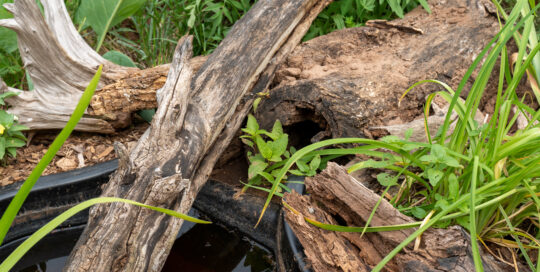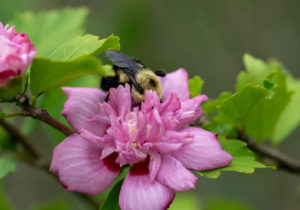
Here is a tale of two bumble bees and an example of why double-petaled cultivars may not be the best for pollinators.
About Hibiscus syriacus (rose of Sharon)
I have several
Hibiscus syriacus shrubs in my yard. These plants are native to Asia, (I’ve seen both China and India cited), but are favorites in gardens around the world because they are
so easy to grow. The plant has many common names including rose of Sharon, shrub althea, and rose mallow. They are, in fact, in the mallow family. It is
considered invasive in some counties in the U.S., but not in my state. I have two different cultivars in my yard, one with single-petaled flowers and another with double petals. Pollinators use both, but one outperforms the other. This week I was out taking pictures of insects and photographed two separate bumble bees as they had vastly different experiences wallowing around the two types of flowers.
Single-petaled cultivar
The bumble bee on the single-petaled flower was blanketed in pollen. As it moved around inside the flower, more and more pollen stuck to it. I could see its tongue working for nectar, and it appeared to be finding plenty. After working around inside the flower for a while, the bee actually went limp for a moment, upside down, legs splayed, almost as if it had gotten so full from all that good nectar that it needed to digest for a while. It looked like it had found bumble bee paradise, with more ambrosia than it knew how to handle.
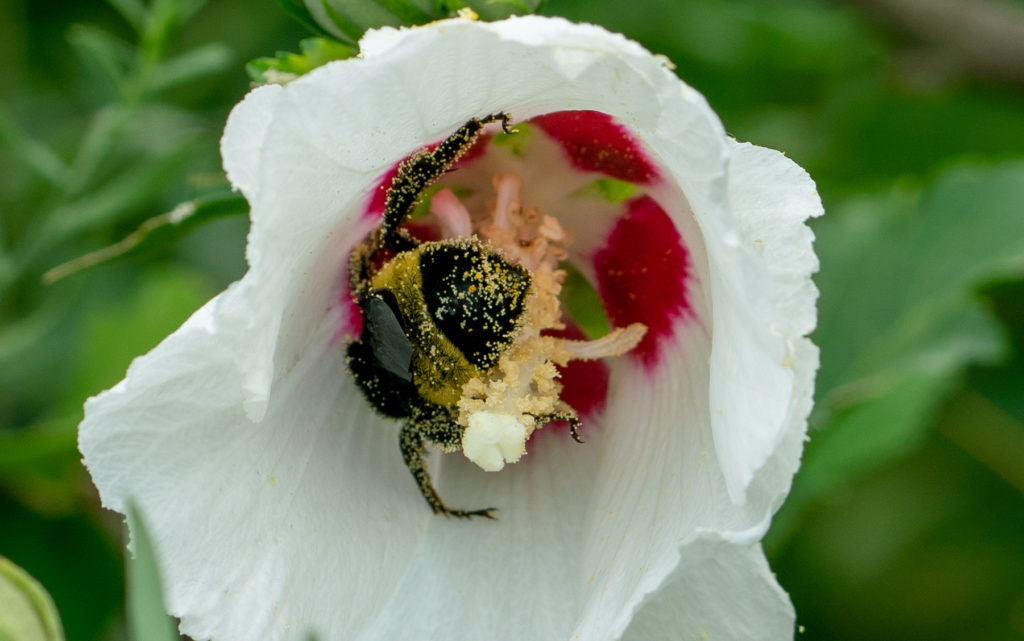
This bumble bee is blanketed in pollen from this flower.
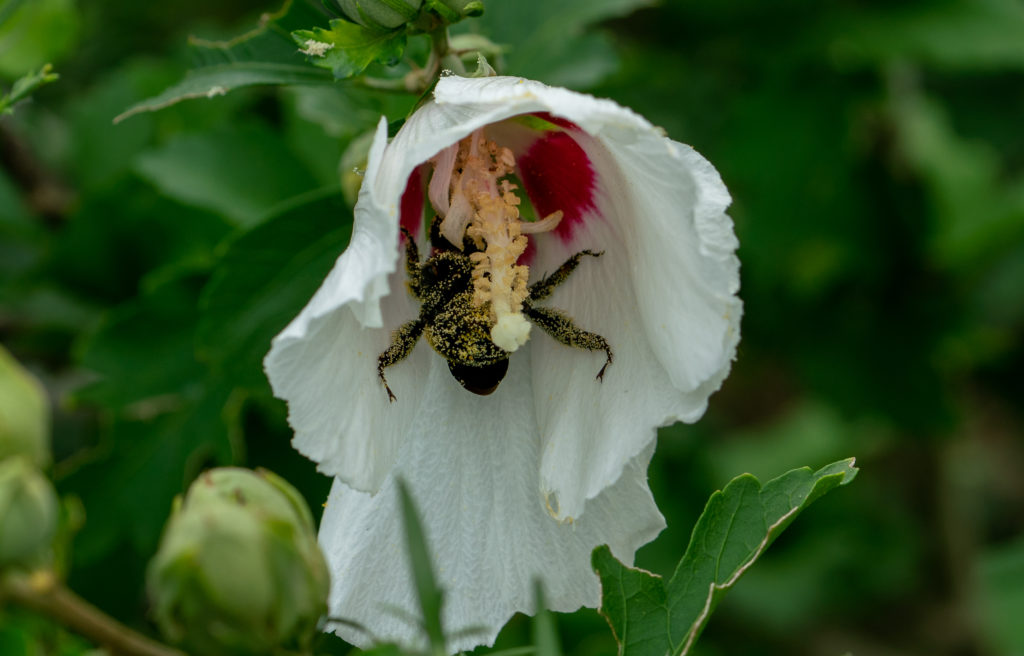
Euphoria reached, apparently, since this bee stayed in this position for several minutes before starting to move around again.
Double-petaled cultivar
The second bee was a little less fortunate. I watched it land on a double-petaled flower, and it struggled to find substantial pollen and nectar. While it did pick up a few grains of pollen, it was far fewer than the first bee. It poked around on all sides of the flower, but never found the center. I couldn’t tell if it found any nectar in all that poking, but it never stopped moving and quickly moved along to another flower.
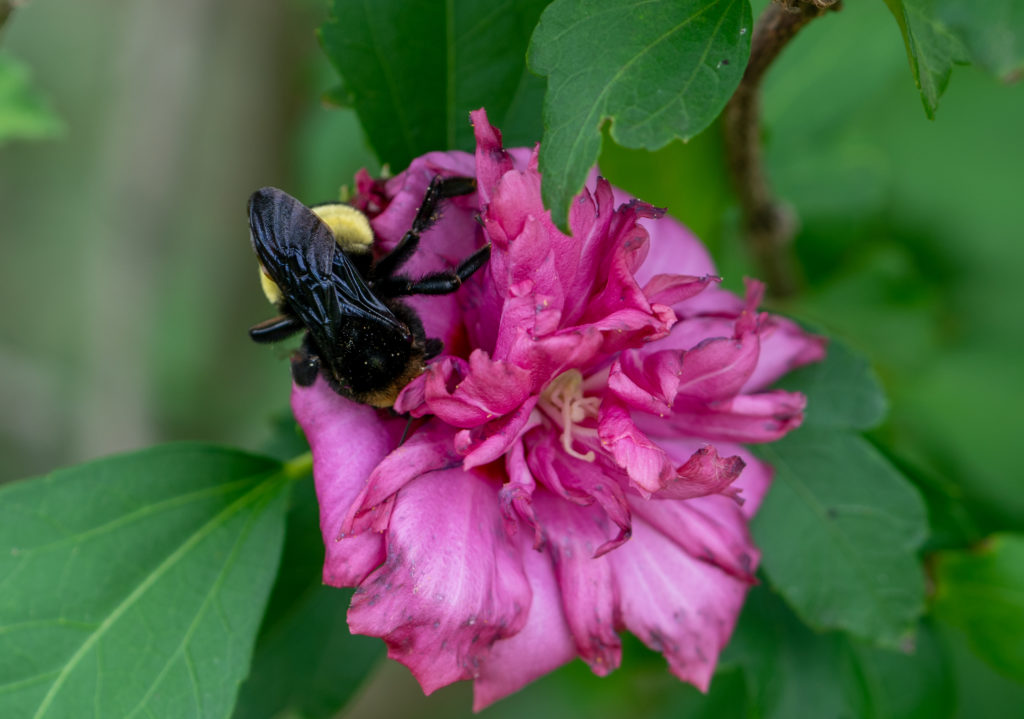
This bumble bee never found the center of the flower, and quickly moved to another flower.
The potential problem with fancy cultivars
I think this is a good illustration of why some fancy cultivars are not necessarily good for pollinator gardens. While not a native, I’ve seen many pollinators use Hibiscus syriacus as both a pollen and a nectar source. But the double-petaled version was clearly not as productive as the other. Cultivars, including nativars, that have been enhanced to please the human eye by changing colors, shapes, or sizes may not be as beneficial to pollinators as unaltered forms. While some changes, such as longer bloom times or more flowers, may be helpful, changes to flower structures and colors may be very problematic. When planting for pollinators, I think it’s probably best to get plants that are as close to wild populations as possible. Certainly, I’d avoid double-petaled cultivars or drastic changes in color.




